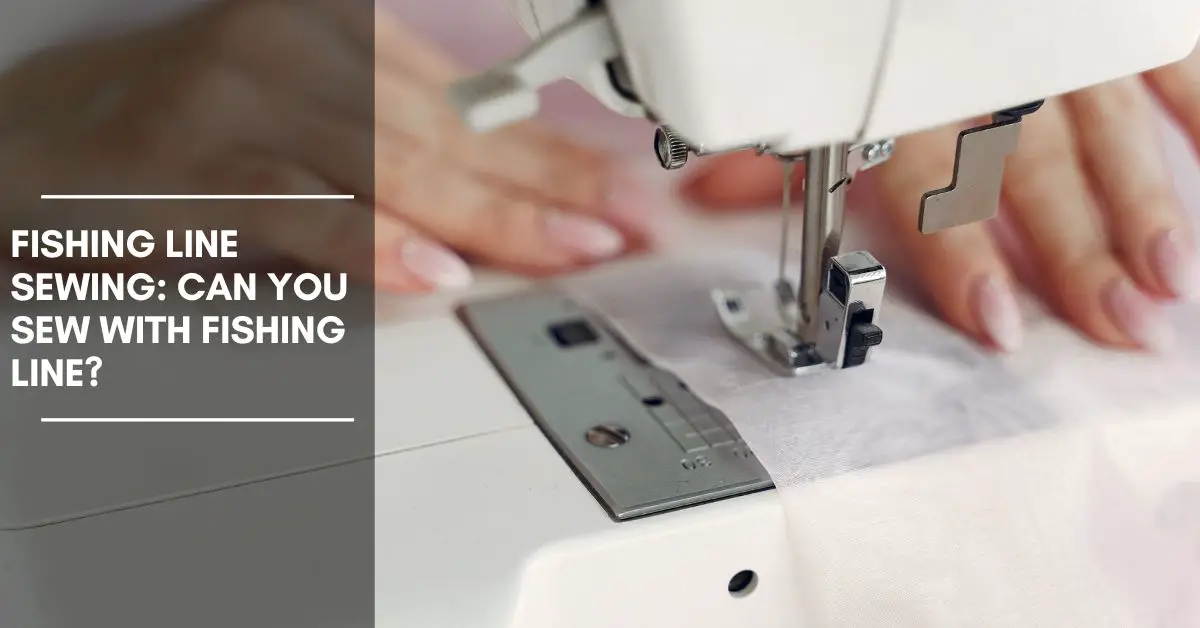Fishing line may not be the first thing that comes to mind when you think about sewing materials, but it can actually be a versatile and useful addition to your sewing kit.
In this article, I’ll explore the pros and cons of sewing with fishing line, and how it can be used in various sewing projects.
I’ll also answer the question in short – yes, you can. Keep reading to learn more about this unique sewing technique and how it can enhance your crafting experience.
Why Sew with Fishing Line?
Hemming and Ruffles
One of the most popular uses of fishing line in sewing is to create beautifully structured hems and ruffles. The stiffness and springiness of the fishing line helps to give these fabric elements a unique shape and volume that’s difficult to achieve with thread alone.
Jewelry and Beading
A fishing line can also be an excellent choice for making jewelry and beading work. Its strength and invisibility make it perfect for stringing beads, crystals, and other decorative elements without drawing attention to the line itself.
Outdoor and Heavy-Duty Projects
The fishing line is known for its durability and resistance to wear and tear, making it an ideal option for outdoor and heavy-duty sewing projects, such as camping gear, sails, and tarps.
How to Sew with Fishing Line
Choosing the Right Fishing Line
When it comes to sewing with fishing line, not all types are created equal. Monofilament fishing line is the best choice for most sewing projects due to its transparency, flexibility, and strength.
Using a Sewing Machine
Sewing with fishing line can be easily accomplished with a sewing machine. Simply replace the thread in your bobbin with the fishing line and sew as you normally would.
Hand Sewing Techniques
For those who prefer hand sewing, fishing line can be used as a substitute for thread. It may require some practice to get used to the unique feel and handling of the fishing line, but once mastered, it can be a valuable skill in your sewing arsenal.
Precautions and Tips
Needle Choice
When sewing with fishing line, it’s essential to use the right needle. Opt for a larger, sturdier needle with a sharp point to pierce through the fabric and fishing line easily.
Knotting and Finishing
Fishing line can be slippery and challenging to knot, so take extra care when finishing your project. Double or triple knot the ends for added security, and consider using a dab of clear nail polish or glue to prevent the knots from unraveling.
Safety First
As with any sewing project, always prioritize safety. Fishing line can be sharp, so handle it with care to avoid cuts and injuries.
Conclusion
So, can you sew with fishing line? Absolutely! With the right techniques, precautions, and a bit of practice, you can use fishing line to add unique structure, durability, and versatility to your sewing projects. Whether you’re creating ruffles, crafting jewelry, or working on outdoor gear, fishing line can be an invaluable addition to your sewing toolkit.
FAQs
- Is fishing line safe to use in sewing projects? Yes, as long as you handle it carefully and use the appropriate needle, fishing line can be a safe and effective sewing material.
- Can I use fishing line in a sewing machine? Yes, simply replace the thread in your bobbin with the fishing line and sew as you normally would.
- What type of fishing line is best for sewing? Monofilament fishing line is the recommended type for most sewing projects due to its transparency, flexibility, and strength.
- Can fishing line be used for embroidery? While it is possible to use fishing line for embroidery, it may not be the best choice for intricate or delicate designs. However, it can be useful for projects where durability and invisibility are important factors.
- How do I finish and secure knots when sewing with fishing line? To secure knots when sewing with fishing line, double or triple knot the ends for added security, and consider using a dab of clear nail polish or glue to prevent the knots from unraveling.

